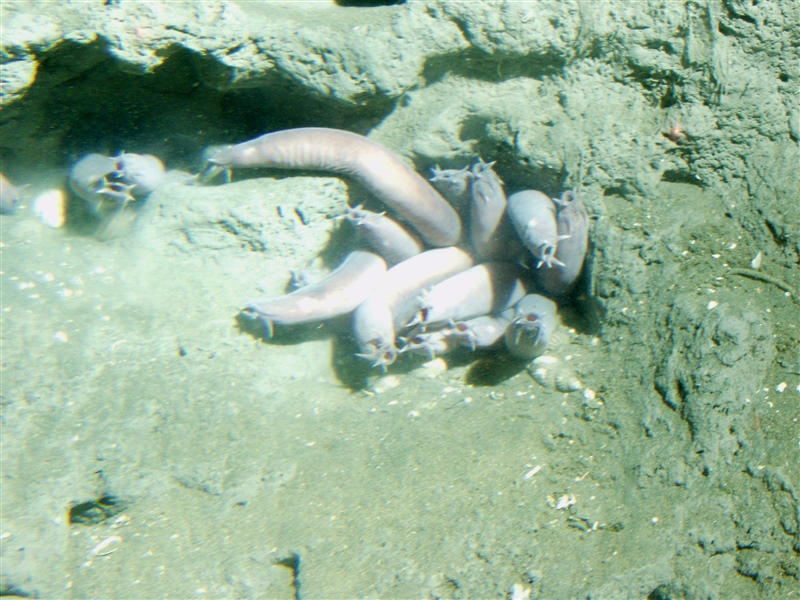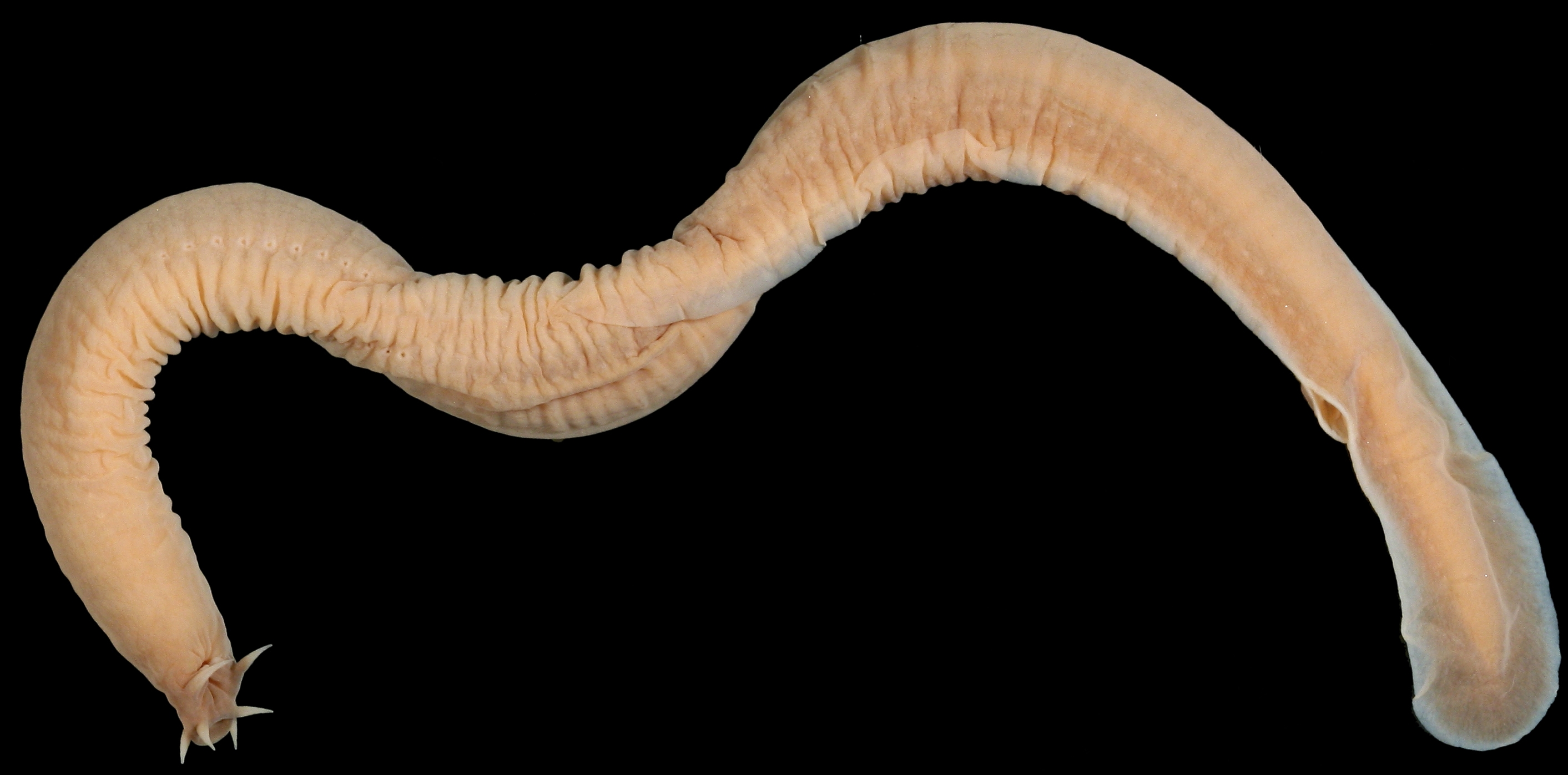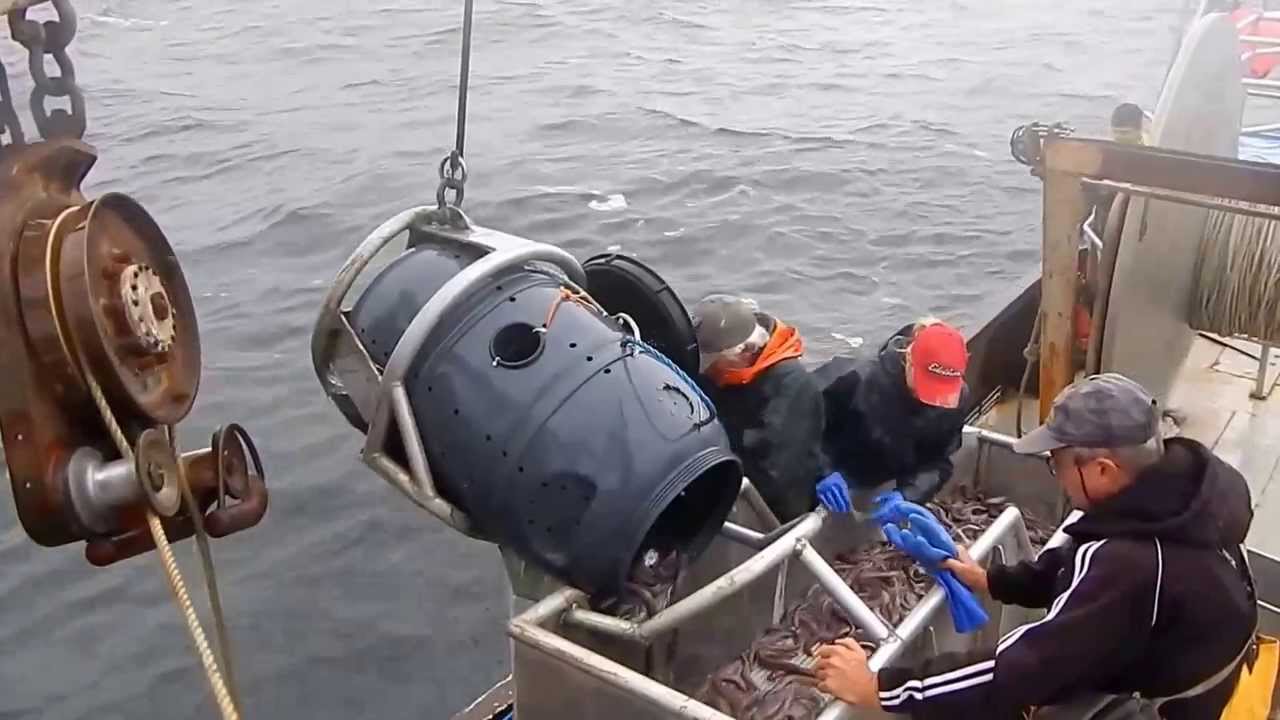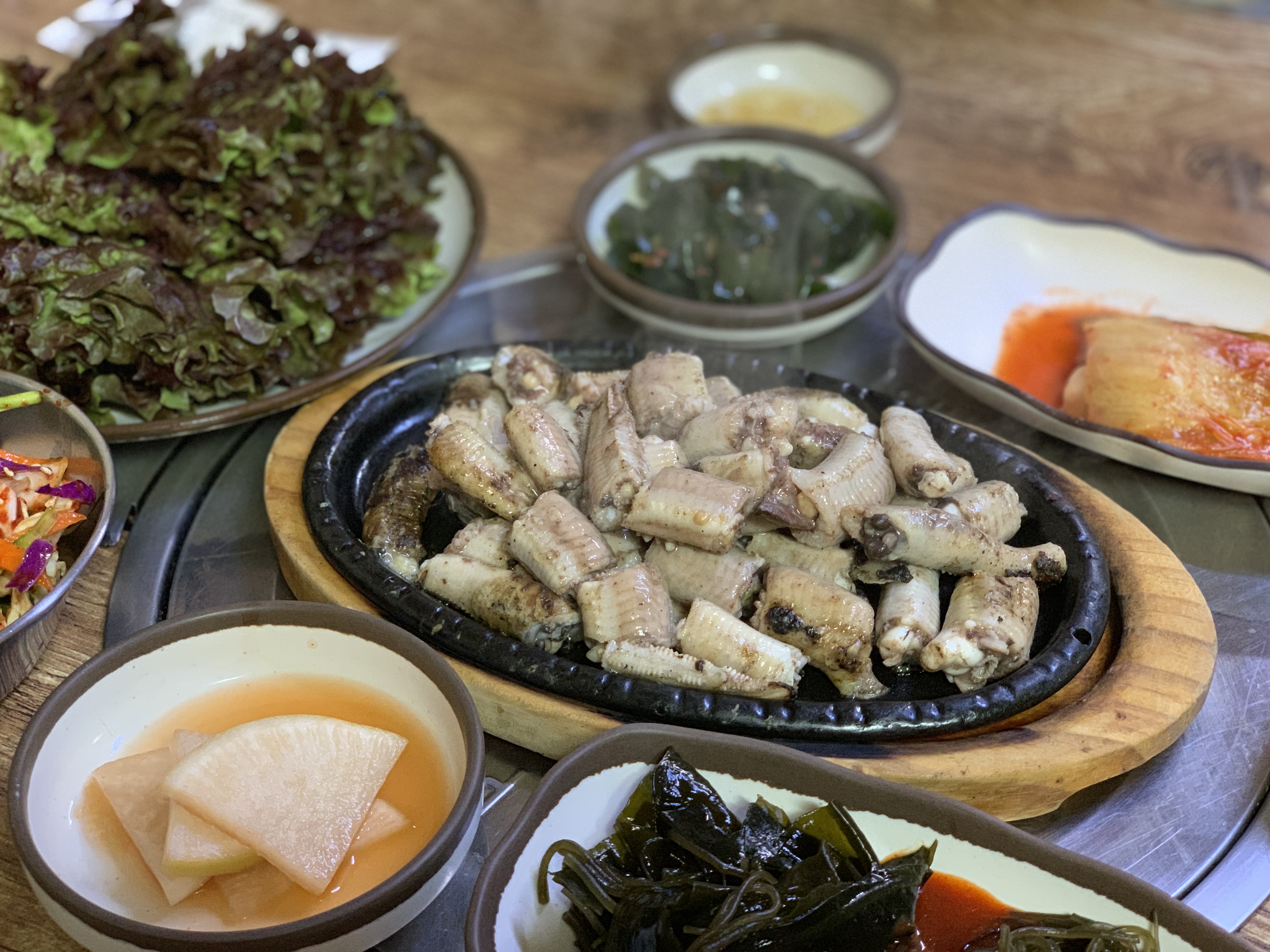Eptatretus stoutii
North Coast (Oregon Border to Point Arena)
North Central Coast (South of Point Arena to Half Moon Bay)
Central Coast (South of Half Moon Bay to Point Conception)
Santa Barbara (Point Conception to Point Dume)
South Coast (Point Dume to Mexico border)
Firm fish
Wild caught

The Science

Taxonomic description
- This fish is cylindrical and long, has no true fins, but has one dorsal finfold in the far back. Its color ranges between dark brown, tan, gray, and brownish red, and is sometimes tinted with blue or purple. [1,2]
- It has a jawless head, and a permanently open sucker-like mouth. [2]
- It averages 30.48-45.72 cm (12-18 inches) in length, with a maximum recorded length of 63.5 cm (25 inches). [1,2]
- The Pacific hagfish produces a sticky, viscous slime when agitated that even the hagfish can get stuck in. [1,2]
Distribution
- This fish is found throughout the eastern Pacific from southeastern Alaska down to Baja California and Mexico. [1]
Life history
- Females reach sexual maturity around 33 cm (13 inches) between 7 and 12 years old, but sex is identifiable at 20 cm (8 inches). [15]
- Males are sexually identifiable at 28 cm (11 inches), and grow larger than females but an average length is not yet known. [15]
- Females may have viable eggs year-round, producing in between 20 to 30 eggs per reproductive cycle. [15]
- This fish has an estimated lifespan of about 40 years in the ocean, or 17 years in a protected environment. [16]
Habitat
- This fish lives at depths ranging from 16-966 m deep and can be found residing in fine silt and clay bottoms. [1]
- The Pacific hagfish scavenges on dead and dying animals using its sense of smell. It typically feeds by either burrowing into its prey with its rasping teeth, or by entering through an existing opening and eating its way out. [2]
- With its slow metabolism, the hagfish can survive up to seven months without eating! [2]
The Fishery

Seasonal availability
- This fish can be caught year-round in California. [3]
Managing authority
- This fish is managed by California Department of Fish and Wildlife, so commercial fishing must abide by CDFW regulations. [4]
- As of 1991, permits are required to fish and logs documenting fishing activity must be submitted to CDFW. [15]
- As established by the Marine Life Management Act, this fish is managed as a state fishery by the California Department of Fish and Wildlife (CDFW), and regulated by the California Fish and Game Commission (CFGC). [4,15, 17]
Gear type
- Hagfish is captured using baited 5-gallon bucket traps with holes drilled in the bottom to allow water flow and for smaller hagfish to escape. [3,4]
Status of the fishery
- Most hagfish is shipped to Korea, where it is commonly eaten. [2,3,4]
- There is currently a lack of data on hagfish populations, so it is not known whether this species is overfished. [1]
- Because this fishery is relatively new, research is still being done to determine what regulations should be in place. [3,9]
Potential ecosystem impacts
- There are no known ecosystem impacts from this method of fishing, but there is concern that because hagfish likely have low fecundity, they may be vulnerable to overfishing. As such, bucket traps must have holes big enough for juvenile hagfish to escape. [3]
- There is some concern about anthropogenic factors like ocean acidification and pollutants affecting hagfish populations. [9]
The Seafood

Edible portions
- Typically the skin is removed and only the meat is cosumed, but some of the organs may be eaten as well. [5,6]
Description of meat
- The meat is pink when raw but turns a white-gray color and has a very chewy consistency when cooked. [7]
Culinary uses 
- Hagfish is typically eaten barbequed, grilled, or pan fried. It is called "gomjangeo" in Korean. [5,6,7]
- When barbequed, hagfish is typically eaten wrapped with raw perilla and lettuce leaves, sauce, and garlic. [5,8]
- For a video on how hagfish is cleaned, prepared, and cooked, visit https://www.youtube.com/watch?v=YjB8rCV9_K4&t=244s [8]
Nutritional information
- Nutritional information based on 100g of inshore hagfish (Eptatretus burgeri) is show on the table to the right. [10]
Seasonal availability
- This fish is not widely available in California as it is typically exported, but it is fished year-round. [3]
References
[1] Froese, R., Valdestamon, R. n.d. Fishbase. Eptatretus stoutii. Web. https://www.fishbase.de/Summary/SpeciesSummary.php?ID=2512&AT=Pacific+ha.... Accessed 6 July 2020.
[2] California Department of Fish and Wildlife. 2020. Hagfish Identification. Web. https://wildlife.ca.gov/Conservation/Marine/NCCFRMP/Hagfish-Id. Accessed 6 July 2020.
[3] Seiler, D. 2015. Sea Grant California. New "slime eel" regulation ensures fishermen capture the largest, slimiest. Web. https://caseagrant.ucsd.edu/news/new-slime-eel-regulation-ensures-fisher.... Accessed 6 July 2020.
[4] California Department of Fish and Wildlife. 2020. Commercial Hagfish Fishery. Web. https://wildlife.ca.gov/Conservation/Marine/NCCFRMP/Commercial-Hagfish. Accessed 6 July 2020.
[5] FoodyTrip. 2018. Youtube. Grilled Hagfish (eating raw eel) - awesome Korean food. Web. https://www.youtube.com/watch?v=KC8AtF3Jd8w. Accessed 7 July 2020.
[6] Travel Thirsty. 2017. Youtube. Korean Street Food - HAGFISH Seafood Korea. Web. https://www.youtube.com/watch?v=HYcDz-RkVlg. Accessed 7 July 2020.
[7] Im, E. The Korean Herald. 2018. [Epicurian Challenge] Snake-like creature writhes, squirms on grill. Web. http://www.koreaherald.com/view.php?ud=20180802000465. Accesed 7 July 2020.
[8] TV jiminTV. 2019. Youtube. [ENGSUB] Hagfish isn't an eel? Grilled Hagfish that you eat by yourself, the end? Web. https://www.youtube.com/watch?v=YjB8rCV9_K4&t=244s. Accessed 7 July 2020.
[9] The Nature Conservancy Oregon. 2019. Resource and Market Analysis of Oregon's Hagfish fishery. Web. https://www.dfw.state.or.us/agency/commission/minutes/19/01_Jan/Resource.... Accessed 7 July 2020.
[10] Under Armour myfitnesspal. n.d. Generic-Korean Inshore Hagfish. Web. https://www.myfitnesspal.com/food/calories/generic-korean-inshore-hagfis.... Accessed 7 July 2020.
[11] Snook, L. 2004. NOAA Photo Library. Pacific hagfish (Eptatretus stoutii) in a hole at 150 meters depth. Web. https://photolib.noaa.gov/Collections/Sanctuaries/Cordell-Bank/emodule/8.... Accessed 7 July 2020.
[12] Digital Fish Library. 2009. Eptatretus stoutii (Pacific Hagfish). Web. http://www.digitalfishlibrary.org/library/ViewSpecies.php?id=323. Accessed 7 July 2020.
[13] Melan, D. 2013. Youtube. Slime Eels 2013. Web. https://www.youtube.com/watch?v=SZDNvilGxMs. Accessed 7 July 2020.
[14] Choi, J. 2019. Michelin Guide. Hello Summer, Busan. Web. https://guide.michelin.com/kr/ko/article/travel/summer_vibes_in_busan_kr. Accessed 8 July 2020.
[15] Tanaka, T. 2008. 3 Pacific Hagfish, Eptatretus stoutii. Status of the Fisheries Report. Web. https://nrm.dfg.ca.gov/FileHandler.ashx?DocumentID=34435&inline. Accessed 20 July 2020.
[16] Aquarium of the Pacific. n.d. Pacific Hagfish. Web. http://www.aquariumofpacific.org/onlinelearningcenter/species/pacific_ha.... Accessed 20 July 2020.
[17] New and Proposed Regulations-2019. 2019. California Fish and Game Commission. Web. https://fgc.ca.gov/Regulations/2019-New-and-Proposed#180_6. Accessed 24 August 2020.
